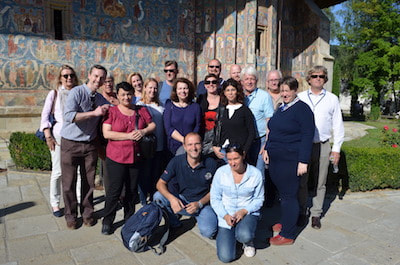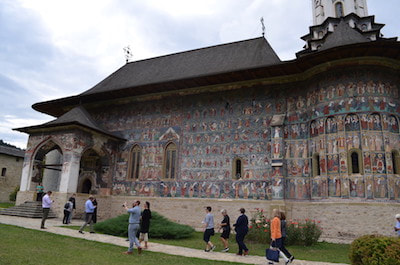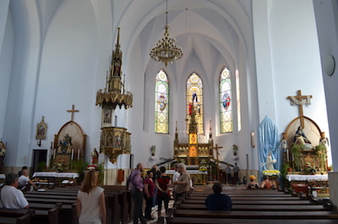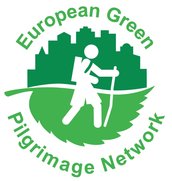EUROPEAN GREEN PILGRIMAGE NETWORK
Romania hosts GP Interreg Europe study visitMembers of the Green Pilgrimage Interreg Europe Project visited Romania in September 2017 on a study trip aimed at sharing experiences and best practices. And members certainly had plenty to ponder after the five-day trip which highlighted Romania's rich relationship between heritage, culture and faith.
The study visit was part of the five-year, €1.18 million Green Pilgrimage Interreg Europe Project which brings together six regions in England, Italy, Norway, Sweden and Romania to promote green pilgrimage. This trip was hosted by Suceava municipality. Participants learned about the importance of tourism and the development of cycling routes and pedestrian trails in Bucovina, particularly around the area's famous painted monasteries, several of which are UNESCO World Heritage sites. Walking pilgrimageHis Eminence Damaschin Dorneanul, Archbishop of Suceava and Radauti, gave an overview of the history of religious pilgrimage in Romania (which includes Orthodox and Catholic faiths). Field trips included visits to St John, Suceviţa and Moldoviţa Monasteries (all UNESCO sites) as well as the black pottery centres of Marginea and Rădăuți. They also had the chance to take part in a walking pilgrimage and below is a personal reflection from the Kent County Council team, published on the Interreg Europe Green Pilgrimage website. "A group of us spent the last day of the trip walking between two monasteries in Dragomirna to Pătrăuți. This short 18km journey highlighted the benefits of walking pilgrimage to local people and economies. We slowly made our way through forest trails and small villages. We engaged with local people asking us where we were going and why we were walking, we saw local people collecting firewood from the forests, we noticed the detailed care of village houses and the development of facilities and services in rural areas. "We stopped in village shops for refreshments and we appreciated small provincial museums off the tourist track. The very act of walking brings people closer and shares the economic and cultural benefits of tourism to the smaller rural areas."
|
'The very act of walking brings people closer and shares the economic and cultural benefits of tourism to the smaller rural areas.' |
Different traditions of pilgrimage between the faiths |
The role of pilgrimage |
|
EGPN member Rev Berit Lanke gave a presentation on her experience of the different approaches to pilgrimage between different faiths such as her own Lutheran tradition as well as Catholic, Anglican and Orthodox traditions.
As someone who 'could not envisage a pilgrimage without a long route to walk', on joining an Orthodox pilgrimage to Bulgaria's greatest venerated saint, St John of Rila, she says she was very surprised to find that everyone arrived by car: 'The only pilgrimage by foot was a few metres' liturgical procession down the hill to the gate of the monastery.' But, finding herself standing all night in the church, she realised 'the big achievement here was not me walking far across mountains with my backpack but it was a holy moment of encounter with the Holy God and Saviour, the holy Saint and Saints, and thereby the Holy Church from eternity to eternity, and there I was included!' Access her presentation here. |
Click here to access the presentation by Octavian Arsene of the Romanian Ministry of Tourism, who discussed the strong link between culture, pilgrimage and religious tourism, and also the role of pilgrimage in promoting societies based on tolerance, respect for others, freedom and solidarity.
|
With thanks to Creative Commons photographer Alex Berger for the main picture of Voronet Painted Monastery, Romania. Other pictures: Interred Europe study visit.



